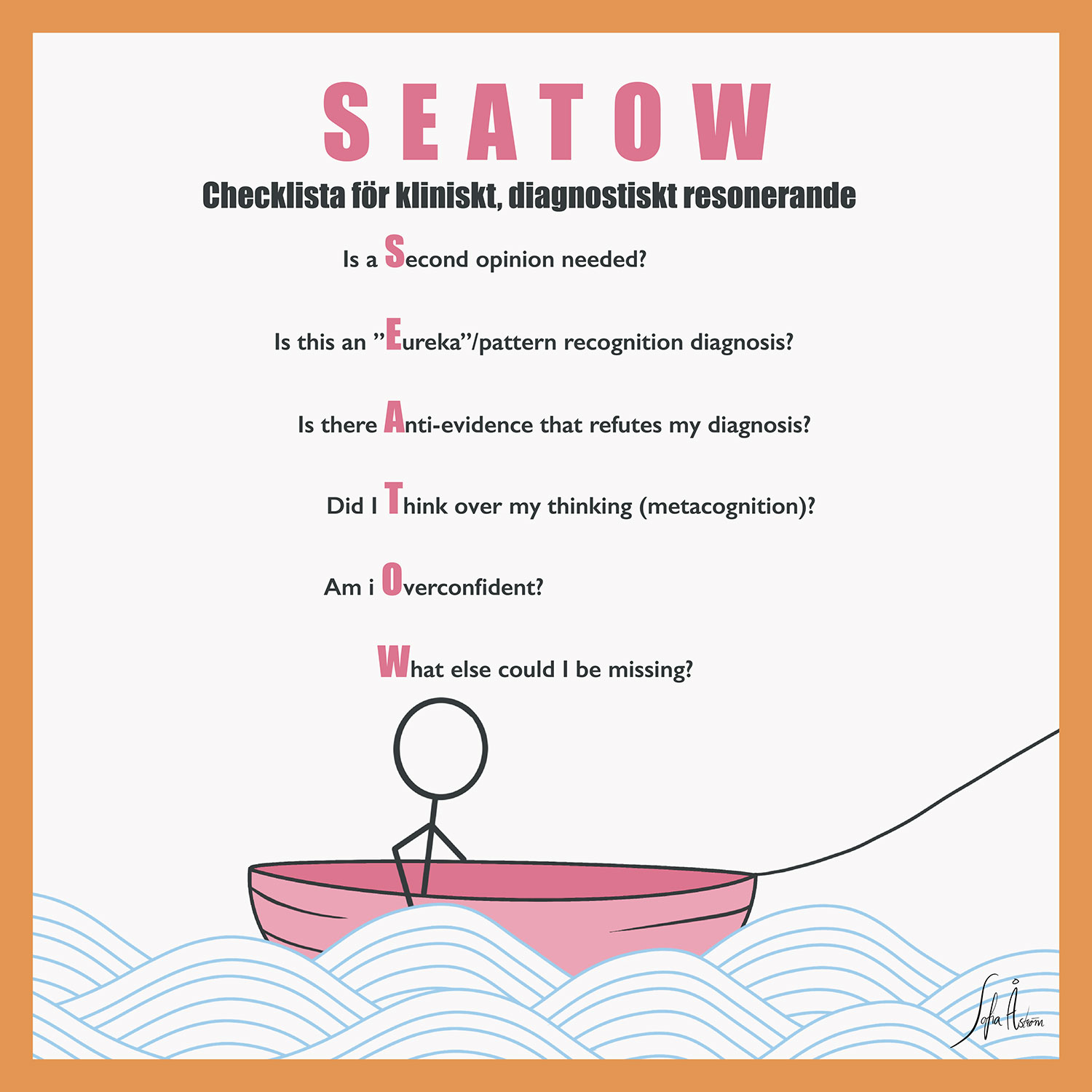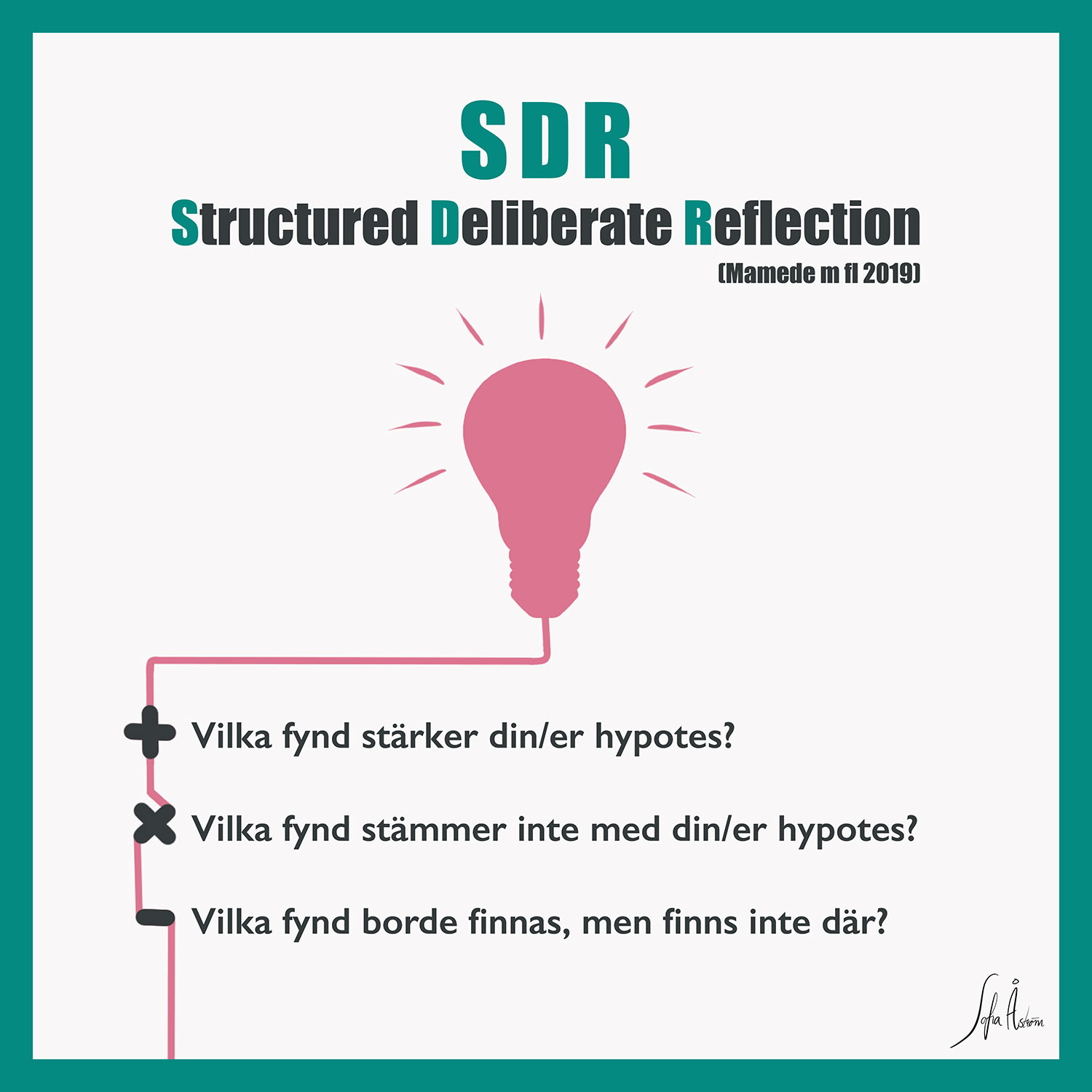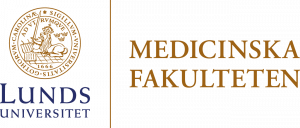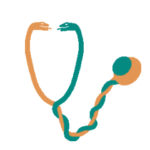Jag vill handleda / Modeller för hypotesprövning
Modeller för hypotesprövning
SDR – Structured Deliberate Reflection Model
Detta är en enkel modell för hypotesprövning i tre steg som stimulerar till att formulera argument för och emot en diagnos eller ett beslut.
“Structured reflection ‘explicitly focuses students’ attention on the findings in the case that speak for or against each of the alternative diagnoses, which may lead to the formation of deeper and richer mental representations of diseases, consequently enhancing students’ competence in diagnosing other cases of the same disease” (Mamede et al. 2012).
SEA TOW – checklista för kliniskt, diagnostiskt resonerande
Denna checklista eller så kallade “thinking tool” är utformad till stöd för att komma ihåg viktiga element av kliniskt, diagnostiskt resonerande. “A metacognitive approach that may help learners to recognize the need to slow down and avoid premature closure errors” (Moulton et al. 2007 in Rencic, J. (2011). Twelve tips for teaching expertise in clinical reasoning. Medical Teacher, 33: 887–892.)
 Förkortningen står för:
Förkortningen står för:
S= Is a Second opinion needed?
E= Is this a ‘‘Eureka’’/pattern recognition diagnosis?
A= Is there Anti-evidence that refutes my diagnosis?
T= Did I Think over my thinking (metacognition)?
O= Am I Overconfident?
W= What else could I be missing?
(Williams PA. A six-item mnemonic to reduce cognitive errors during medical diagnosis. 3rd International conference of the Society for Medical Decision Making, 2010 October 25–27. Toronto, Canada).
Jag vill handleda / Modeller för hypotesprövning
Modeller för hypotesprövning
SDR – Structured Deliberate Reflection Model
Detta är en enkel modell för hypotesprövning i tre steg som stimulerar till att formulera argument för och emot en diagnos eller ett beslut.
“Structured reflection ‘explicitly focuses students’ attention on the findings in the case that speak for or against each of the alternative diagnoses, which may lead to the formation of deeper and richer mental representations of diseases, consequently enhancing students’ competence in diagnosing other cases of the same disease” (Mamede et al. 2012).
SEA TOW – checklista för kliniskt, diagnostiskt resonerande
Denna checklista eller så kallade “thinking tool” är utformad till stöd för att komma ihåg viktiga element av kliniskt, diagnostiskt resonerande. “A metacognitive approach that may help learners to recognize the need to slow down and avoid premature closure errors” (Moulton et al. 2007 in Rencic, J. (2011). Twelve tips for teaching expertise in clinical reasoning. Medical Teacher, 33: 887–892.)
 Förkortningen står för:
Förkortningen står för:
S= Is a Second opinion needed?
E= Is this a ‘‘Eureka’’/pattern recognition diagnosis?
A= Is there Anti-evidence that refutes my diagnosis?
T= Did I Think over my thinking (metacognition)?
O= Am I Overconfident?
W= What else could I be missing?
(Williams PA. A six-item mnemonic to reduce cognitive errors during medical diagnosis. 3rd International conference of the Society for Medical Decision Making, 2010 October 25–27. Toronto, Canada).




